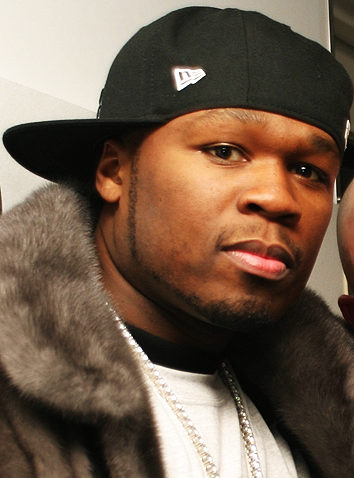
In the rarified air of ultra-luxury automobiles, ownership is about far more than simply possessing the keys to a magnificent machine. For brands like Bugatti and Ferrari, their vehicles are extensions of their heritage, engineering prowess, and an almost mythical aura of exclusivity. This isn’t just about price tags that soar into the millions; it’s about a lifestyle, a representation, and an alignment with the brand’s core values that few can truly embody.
Indeed, having enough money to own and maintain one of these automotive masterpieces is a monumental feat in itself. Yet, a fascinating and often surprising phenomenon occurs when even the most celebrated A-list personalities find themselves on a metaphorical blacklist, effectively barred from acquiring the newest, most coveted models. This isn’t a mere rumor whispered in elite circles; it’s a documented reality, shaped by a confluence of PR disasters, distasteful modifications, and a strict adherence to brand principles that these venerable automakers fiercely protect.
As we delve into the intricate world where celebrity status collides with stringent luxury brand policies, we uncover the compelling reasons behind these surprising restrictions. From rapid resales that devalue exclusivity to public gaffes that tarnish a pristine image, we’ll explore the various missteps that have landed some of the biggest names in entertainment and sports on the outs with the world’s most desired automotive marques. It’s a journey into the delicate balance of brand perception, loyalty, and the unexpected power dynamics between the rich, the famous, and the guardians of automotive prestige.

1. **Floyd Mayweather: The Art of the Flip and Brand Loyalty**Floyd ‘Money’ Mayweather is a name synonymous with extravagant wealth, an undefeated boxing record, and an enviable collection of luxury automobiles. His prowess in the ring is legendary, but his approach to car ownership has reportedly landed him in hot water with some of the industry’s most exclusive players. Mayweather’s inclination for rapidly acquiring and divesting high-value assets, including coveted cars and even waiting list spots, has reportedly put him on the blacklist of both Bugatti and Ferrari.
The core issue stems from Mayweather’s reported habit of selling a coveted spot on the waiting list for a Bugatti. For a brand that meticulously curates its clientele and manages demand through extensive waiting lists, such an action undermines their carefully constructed system of exclusivity. The waiting list itself is a testament to the brand’s desirability, and allowing its manipulation for quick profit contradicts the very essence of earned privilege that Bugatti cultivates among its loyal patrons.
Beyond just selling waiting list spots, Mayweather’s broader pattern of quickly buying and then selling luxury vehicles has also drawn the ire of manufacturers. Ferrari, in particular, views ownership as a commitment to a lifestyle and brand representation, not merely a financial transaction. When a supercar is flipped for profit shortly after purchase, especially a limited edition, it can devalue the brand’s perceived exclusivity and frustrate loyal VIP clients who genuinely covet these machines.
Such actions are perceived by these luxury brands as a disregard for the established norms of high-end ownership. They want their cars to be enjoyed, cherished, and represent a certain image for an extended period, not treated as mere commodities for speculative gains. For Mayweather, a man who has demonstrably proven his financial capability to own these cars, it’s his approach to their tenure that has reportedly caused friction, leading to significant purchasing restrictions from these ultra-luxury marques.

2. **Justin Bieber: Modifications, Misplaced Cars, and Reckless Conduct**Justin Bieber, one of the most recognizable pop stars globally, has had his own series of well-documented run-ins with Ferrari’s stringent ownership policies. His 2011 Ferrari 458 Italia became the focal point of several controversies that ultimately led to his reported ban from purchasing new vehicles from the esteemed Italian automaker. Bieber’s actions exemplify the clash between celebrity self-expression and a brand’s unwavering commitment to its design integrity and public image.
One of Bieber’s primary offenses was the ‘tasteless’ modifications he made to his 458 Italia. He customized the vehicle by painting it a vibrant blue and reportedly altering its aerodynamics. Ferrari maintains a very clear stance on the aesthetics of its vehicles, seeing any significant deviation from the original design as an affront to its artistic and engineering vision. Such extensive modifications, particularly those deemed flashy or tacky, are precisely the kind of behavior Ferrari attempts to discourage among its elite clientele.
Adding to his woes, Bieber made headlines when he reportedly couldn’t remember where his car was parked for two weeks. This incident, while perhaps humorous to some, likely conveyed an image of carelessness and a lack of respect for the rare and valuable asset he possessed. For a brand that emphasizes the passion and reverence owners should have for their vehicles, such an anecdote would undoubtedly be viewed unfavorably, contributing to a perception of irresponsible ownership.
Furthermore, Bieber’s history of reckless driving incidents has also been cited as a reason for Ferrari’s disapproval. In 2014, in an attempt to evade paparazzi, he reportedly braked sharply, causing a collision. Such behavior not only poses a safety risk but also directly associates the Ferrari brand with irresponsible conduct, undermining its image of sophisticated performance. His decision to auction off the heavily modified car in 2017 further solidified his standing on Ferrari’s alleged blacklist, as the brand discourages the quick resale of customized vehicles.
Car Model Information: 2019 Volkswagen Atlas 3.6L SE
Name: Ferrari 458
Aka: Ferrari 458 Italia,Ferrari 458 Speciale,Ferrari 458 Spider
Manufacturer: Ferrari
Production: 2009–2015
Assembly: Maranello
Designer: Donato Coco
Class: Sports car
BodyStyle: berlinetta,Convertible
Layout: Rear-engine, rear-wheel-drive layout
Engine: Ferrari F136 engine#Ferrari,V8 engine
Powerout: ubl
Abbr: on
Transmission: dual clutch transmission,automatic transmission
Wheelbase: 2650 mm
Length: 4527 mm
Width: 1937 mm
Height: 1213 mm
Weight: 3450 lb
Order: flip
Predecessor: Ferrari F430
Successor: Ferrari 488
Categories: 2010s cars, 24 Hours of Le Mans race cars, All articles with unsourced statements, Articles with hAudio microformats, Articles with short description
Summary: The Ferrari 458 Italia (Type F142) is an Italian mid-engine sports car produced by Ferrari. The 458 is the successor of the F430, and was first officially unveiled at the 2009 Frankfurt Motor Show. It was succeeded by the 488 GTB (Gran Turismo Berlinetta) in 2015.
Get more information about: Ferrari 458
Buying a high-performing used car >>>
Brand: Ferrari Model: 458 Italia
Price: $15,988 Mileage: 72,895 mi.

3. **Deadmau5: The “Purrari” Debacle and Customization Limits**The electronic music producer Deadmau5 (Joel Zimmerman) sparked one of the most talked-about luxury car controversies with his heavily customized Ferrari 458 Spider, affectionately dubbed the “Purrari.” This vehicle, wrapped in a bright Nyan Cat design and adorned with custom badges and floor mats, became a vivid example of where a celebrity’s desire for unique expression can clash fundamentally with a luxury automaker’s brand identity and intellectual property rights.
Deadmau5’s modifications, while undoubtedly creative and aligned with his public persona, were a direct challenge to Ferrari’s deeply ingrained philosophy regarding the sanctity of its vehicle designs. Ferrari considers its cars works of art, and any alteration that significantly deviates from their original aesthetic or incorporates third-party branding can be seen as an infringement. The Nyan Cat wrap, combined with custom badges, transformed the car into something distinctly non-Ferrari in the brand’s eyes.
The situation escalated when Deadmau5 received a cease and desist letter from Ferrari, demanding the removal of the wrap and the custom badges. This swift and firm action underscored Ferrari’s uncompromising stance on maintaining control over its brand image. Despite Deadmau5 claiming to have complied and removed the wrap before selling the car, its subsequent reappearance in the same guise suggested a continued defiance that would certainly not endear him to the Italian marque.
The “Purrari” incident highlights a critical tension for luxury brands: how much creative freedom should owners have with their multi-million dollar investments? For Ferrari, the answer is clear – their brand equity, built over decades of meticulous design and performance, takes precedence. While owners are expected to personalize their vehicles within certain bounds, extreme alterations like Deadmau5’s are seen as undermining the very essence of what makes a Ferrari a Ferrari, leading to severe consequences for the owner’s standing with the company.
Car Model Information: 2019 Volkswagen Atlas 3.6L SE
Name: Ferrari 458
Aka: Ferrari 458 Italia,Ferrari 458 Speciale,Ferrari 458 Spider
Manufacturer: Ferrari
Production: 2009–2015
Assembly: Maranello
Designer: Donato Coco
Class: Sports car
BodyStyle: berlinetta,Convertible
Layout: Rear-engine, rear-wheel-drive layout
Engine: Ferrari F136 engine#Ferrari,V8 engine
Powerout: ubl
Abbr: on
Transmission: dual clutch transmission,automatic transmission
Wheelbase: 2650 mm
Length: 4527 mm
Width: 1937 mm
Height: 1213 mm
Weight: 3450 lb
Order: flip
Predecessor: Ferrari F430
Successor: Ferrari 488
Categories: 2010s cars, 24 Hours of Le Mans race cars, All articles with unsourced statements, Articles with hAudio microformats, Articles with short description
Summary: The Ferrari 458 Italia (Type F142) is an Italian mid-engine sports car produced by Ferrari. The 458 is the successor of the F430, and was first officially unveiled at the 2009 Frankfurt Motor Show. It was succeeded by the 488 GTB (Gran Turismo Berlinetta) in 2015.
Get more information about: Ferrari 458
Buying a high-performing used car >>>
Brand: Ferrari Model: 458 Spider
Price: $15,988 Mileage: 72,895 mi.

4. **Tyga: Financial Mismanagement and Repossessions**Rapper Tyga, known for his lavish lifestyle and his associations with the Kardashian-Jenner family, found himself in hot water with Ferrari due to a different, yet equally impactful, set of issues: financial mismanagement and a track record of not making payments on leased luxury vehicles. While flashy modifications draw attention, a history of repossession speaks volumes about an owner’s financial reliability and overall respect for high-value assets, which is a critical factor for luxury brands.
Tyga’s habit of flaunting leased supercars without fulfilling his payment obligations led to several embarrassing incidents, including the repossession of a 2012 Ferrari 458 Spider, among other vehicles. Such public financial woes and the resultant repossessions are incredibly damaging to the image that Ferrari strives to project. The brand is synonymous with affluence, success, and stability, and an owner whose vehicles are being seized due to non-payment directly contradicts this carefully cultivated persona.
For a luxury brand, an owner’s financial stability and integrity are almost as important as their adherence to aesthetic guidelines. When a celebrity is seen to be living beyond their means, especially when it involves their high-profile cars, it casts a shadow on the brand itself. It implies that their vehicles are associated with financial irresponsibility, an undesirable trait for a company that targets the world’s most successful and discerning individuals.
Ferrari’s alleged ban on Tyga underscores the importance of a clean financial record and responsible ownership for maintaining a relationship with such an exclusive automaker. It serves as a stark reminder that the privilege of owning a Ferrari extends beyond simply being able to afford the initial purchase; it encompasses the ongoing financial commitment and the presentation of a stable, respectable image that aligns with the brand’s elite status.

5. **Tom Cruise: The Red Carpet Blunder and Public Image**Even a global megastar like Tom Cruise, whose association might typically be seen as a promotional coup, can find himself on the wrong side of a luxury car brand’s strict rules. His alleged blacklisting by Bugatti stems not from reckless driving or distasteful modifications, but from a seemingly innocuous red carpet moment that, under the intense scrutiny of brand image, was deemed a significant blunder. The incident occurred at the premiere of Mission Impossible III, involving his Bugatti Veyron.
Cruise arrived at the event with his then-wife Katie Holmes in his impressive Bugatti Veyron. The moment that supposedly sealed his fate involved his attempt to open the passenger door for Holmes. What should have been a seamless act of chivalry reportedly took several attempts, as he struggled to get the door open. While fans online speculated that the door might have been locked from the inside and not a fault of the car itself, Bugatti reportedly could not forgive the public spectacle.
For an ultra-luxury brand like Bugatti, known for its unparalleled engineering, precision, and flawless performance, any public hiccup, no matter how minor, can be perceived as a direct reflection on the quality and user-friendliness of their vehicles. The image of a global celebrity fumbling with a car door, especially one as exotic and prestigious as a Veyron, potentially undermined Bugatti’s reputation for effortless luxury and meticulous design.
This incident highlights the extraordinarily high stakes involved in celebrity associations for these brands. Every public appearance, every interaction with their product, is scrutinized. While Tom Cruise has since kept his garage full with other luxury cars, including his infamous Bugatti Veyron, the perceived red carpet blunder was enough for Bugatti to reportedly add him to their list of individuals who would not be offered new models, emphasizing the brand’s unwavering commitment to its perfect image.

6. **Flo Rida: Legal Troubles and Tainted Publicity**The repercussions of an owner’s personal conduct can extend far beyond individual reputation, directly impacting the carefully constructed image of the luxury brands they represent. Rapper Flo Rida learned this lesson firsthand when a personal legal incident involving his Bugatti Veyron led to his reported blacklisting by the esteemed French marque. This case perfectly illustrates how a luxury brand’s commitment to protecting its public perception can be uncompromising.
In 2011, shortly after acquiring his Bugatti Veyron, Flo Rida was pulled over by the police and subsequently charged with drink driving after failing a breathalyser test. The incident, involving a highly conspicuous and iconic luxury vehicle, quickly garnered media attention. For Bugatti, this was not merely a celebrity’s personal legal trouble; it was an ‘incredibly bad PR’ event that directly associated their brand with irresponsible and unlawful behavior.
The brand’s perception of “bad PR” in this context is crucial. Bugatti crafts vehicles that embody peak performance, precision engineering, and sophisticated luxury. An owner being arrested for drink driving while behind the wheel of one of their masterpieces creates a direct contradiction to these values. It links the brand to irresponsibility and negative headlines, which is an absolute anathema for companies that thrive on an image of elite discretion and impeccable taste.
Consequently, Bugatti swiftly added Flo Rida’s name to their seemingly lengthy blacklist. This decisive action demonstrates the zero-tolerance policy many luxury brands maintain when an owner’s actions risk tarnishing their prestigious image. It underscores that for these exclusive automakers, the privilege of ownership comes with an implicit responsibility to uphold the brand’s reputation, and a failure to do so can result in permanent exclusion from their elite clientele.
While the initial section highlighted celebrity missteps that led to direct brand interventions, the realm of luxury car brand exclusivity runs even deeper. It extends into more intricate territories where the actions of public figures, even in their professional or personal capacities, can profoundly impact their access to the world’s most coveted automobiles. We now delve into cases that examine the complexities of journalistic reporting, legal confrontations, public critique, and the broader implications of celebrity lifestyle choices on a brand’s pristine image and, crucially, their access to ultra-exclusive models. These examples underscore the multifaceted nature of brand preservation in the high-stakes automotive industry.

7. **Chris Harris: The Journalist’s Scathing Critique**The world of automotive journalism, typically a conduit for celebrating mechanical marvels, occasionally finds itself at odds with the very brands it covers. Chris Harris, a respected automotive journalist and TV presenter, discovered this challenging dynamic firsthand when his critical reporting on Ferrari’s practices led to his being blacklisted from receiving press cars and, reportedly, from purchasing new Ferraris. His outspokenness shone a light on a controversial aspect of manufacturer-journalist relations that Ferrari found particularly unpalatable.
Harris’s contention, articulated in a 2011 article for Jalopnik, centered on the alleged practice of Ferrari tuning its press cars to deliver superior performance and handling compared to the vehicles sold to customers. He further claimed that the Italian marque would sometimes demand to know the specific track a magazine intended to use for testing, ensuring their cars were optimally set up. Such practices, Harris argued, inherently skewed journalistic reviews, guaranteeing glowing coverage for Ferraris while placing rival vehicles at an unfair disadvantage.
Ferrari, while denying the allegations, swiftly responded by banning Harris from receiving any further press cars. This retaliatory measure underscored the brand’s sensitivity to public criticism and its desire to control the narrative surrounding its products. For a company that meticulously cultivates an image of engineering perfection, suggestions of artificial performance enhancement for media consumption were clearly deemed a significant threat to its credibility and authority.
However, Harris’s defiance in the face of this ban ultimately proved a pivotal moment. By proving he could still acquire and review Ferraris, even without direct manufacturer approval — famously stating in a 2013 review, “This [458 Italia] belongs to Ferrari and I’m probably not supposed to be driving it” — he forced the brand to reconsider. His persistence eventually led to his removal from the blacklist, allowing him to test more Ferraris and highlighting the subtle power dynamics between media scrutiny and corporate control.

8. **Preston Henn: The LaFerrari Aperta Legal Battle**Exclusivity in the ultra-luxury car market often means that even long-standing, loyal patrons can be denied access to the most coveted limited-edition models. This stark reality became a public spectacle when Preston Henn, an avid Ferrari fan, revered car collector, and former winner of the 24 Hours of Daytona, initiated a lawsuit against Ferrari after being refused the opportunity to purchase a LaFerrari Aperta. His case became a landmark example of how far some individuals are willing to go to challenge a brand’s selective sales policies.
Henn’s argument was compelling: he asserted that Ferrari’s rejection had damaged his reputation as a premier collector. For someone with his pedigree and extensive history of Ferrari ownership, being denied a build slot for such a prestigious vehicle felt like a personal slight and a challenge to his established status within the automotive elite. He even famously sent Ferrari a cashier’s check for $1 million as a deposit, demonstrating his serious intent and financial capability, yet the offer was still rejected.
Ferrari’s steadfast refusal to grant Henn access to the LaFerrari Aperta, despite his proven loyalty and financial resources, highlighted the brand’s right to decide on special editions. It underscored their absolute control over who gets to own their most exclusive creations, regardless of past contributions or personal wealth. The unwritten rules of Ferrari’s VIP list extend beyond mere purchasing power, often encompassing a broader alignment with the brand’s intangible values and discretion.
Although Henn eventually withdrew his lawsuit, the incident left a lasting impression on the luxury car community. Tragically, he passed away a year later without ever achieving his dream of owning the limited-run hypercar. His struggle brought to the forefront the contentious nature of ultra-exclusivity and the often-opaque criteria that govern access to the pinnacle of automotive desire, confirming that even the most celebrated collectors are subject to the brand’s ultimate discretion.
Car Model Information: 2019 Volkswagen Atlas 3.6L SE
Name: LaFerrari
Manufacturer: Ferrari
ModelCode: F150
Production: 2013–2018
ModelYears: 2013–2016 (coupé),2016–2018 (Aperta)
Assembly: Maranello
Designer: Flavio Manzoni
Class: Sports car
BodyStyle: coupé
Layout: Rear mid-engine, rear-wheel-drive layout
Related: Ferrari FXX-K,Ferrari Daytona SP3
Engine: Ferrari F140 engine,V12 engine
Motor: Kinetic energy recovery system
Transmission: Dual-clutch transmission
Powerout: Convert
Wheelbase: 2650 mm
Abbr: on
Length: 4702 mm
Width: 1992 mm
Height: 1116 mm
Weight: 3495 lb
Order: flip
Predecessor: Ferrari Enzo
Successor: Ferrari F80
Sp: uk
Doors: Butterfly doors
Categories: All Wikipedia articles written in British English, Articles with short description, CS1 Italian-language sources (it), Cars discontinued in 2018, Cars introduced in 2013
Summary: The LaFerrari (project name F150) is a limited production mid-engine, mild hybrid sports car built by Italian automotive manufacturer Ferrari. Its name means “The Ferrari” in Italian, as it is intended to be the definitive Ferrari.
Get more information about: LaFerrari
Buying a high-performing used car >>>
Brand: Ferrari Model: LaFerrari Aperta
Price: $15,988 Mileage: 72,895 mi.

9. **Simon Cowell: The Swift Resale Conundrum**For luxury car brands, the long waiting lists and meticulous selection processes for their vehicles are not merely about managing demand; they are crucial tools for preserving an aura of exclusivity and value. Celebrities like television personality Simon Cowell, despite their immense wealth and public profile, have reportedly faced repercussions for undermining this carefully constructed system through rapid resales. His alleged ban from Bugatti illustrates the brand’s stringent stance on maintaining the prestige of their vehicles.
Simon Cowell, alongside Formula One driver Jenson Button, reportedly received bans from Bugatti after selling their cars too soon after purchasing them. This practice, often referred to as “flipping,” is deeply frowned upon by ultra-luxury manufacturers. When a high-demand, limited-production vehicle is acquired and then swiftly resold, especially for a significant profit, it can disrupt the market, devalue the brand’s perceived scarcity, and frustrate other loyal VIP clients who genuinely desired the car.
Bugatti, like Ferrari, cultivates a discerning clientele who are expected to cherish their vehicles as long-term assets, not as short-term investments. The act of flipping a car within a short period after purchase implies a transactional rather than a devotional relationship with the brand, directly contradicting the emotional connection and loyalty that these marques strive to foster. Such actions suggest a disregard for the established hierarchy of privilege and patience that governs access to these automotive masterpieces, leading to permanent exclusion from their elite circle.

10. **50 Cent: The Perils of Public Vehicle Criticism**In an age dominated by social media, a celebrity’s public comments, no matter how seemingly trivial, can rapidly escalate into a major brand issue. Rapper 50 Cent learned this lesson the hard way when his public criticism of his Ferrari 488 reportedly landed him on the Italian marque’s blacklist. While expressing dissatisfaction with a product is commonplace, doing so with a luxury brand’s vehicle carries unique implications for its meticulously crafted image.
The controversy arose when 50 Cent publicly criticized his Ferrari 488, apparently due to a dead battery. For an ordinary vehicle, such a complaint might be a minor inconvenience. However, for a brand like Ferrari, whose reputation is built on flawless engineering, unparalleled performance, and an aura of perfection, any public pronouncement of a defect, especially from a high-profile owner, can be incredibly damaging. It risks undermining the perception of reliability and superior quality that the brand works so hard to maintain.
Luxury car manufacturers are acutely aware that their vehicles are not just modes of transport; they are symbols of aspiration and excellence. A celebrity’s public complaint, regardless of its validity, can be amplified across media platforms, potentially creating negative associations with the brand and deterring prospective elite buyers. Ferrari’s alleged response to 50 Cent’s remarks highlights their zero-tolerance policy for actions that could tarnish their pristine image or devalue their products in the public eye.
Car Model Information: 2018 Ferrari 488 Spider Base
Name: Ferrari 488
Manufacturer: Ferrari
Production: 2015–2020
Assembly: Maranello
Designer: Flavio Manzoni
Class: Sports car
BodyStyle: berlinetta
Layout: Rear-engine, rear-wheel-drive layout
Engine: Ferrari F154 engine,twin-turbo,V8 engine
Powerout: ubl
Abbr: on
Transmission: Dual clutch transmission
Wheelbase: 2650 mm
Length: 4568 mm
Width: 1952 mm
Height: 1213 mm
Weight: {{convert,3241,lb,kg,0,abbr=on,order=flip
Order: flip (kerb, Pista)
Predecessor: Ferrari 458
Successor: Ferrari F8
Sp: uk
Categories: Articles with short description, Cars discontinued in 2019, Cars introduced in 2015, Commons category link is on Wikidata, Ferrari sports cars
Summary: The Ferrari 488 (Type F142M) is a mid-engine sports car produced by the Italian automobile manufacturer Ferrari. The car replaced the 458, being the first mid-engine Ferrari to use a turbocharged V8 since the F40. It was succeeded by the Ferrari F8.
The car is powered by a 3.9-litre twin-turbocharged V8 engine, smaller in displacement but generating a higher power output than the 458’s naturally aspirated engine. The 488 GTB was named “The Supercar of the Year 2015” by car magazine Top Gear, as well as becoming Motor Trend’s 2017 “Best Driver’s Car”. Jeremy Clarkson announced the 488 Pista as his 2019 Supercar of the Year.
Get more information about: Ferrari 488
Buying a high-performing used car >>>
Brand: Ferrari Model: 488
Price: $269,999 Mileage: 16,500 mi.
Read more about: From Subprime Cars to Social Media Scandals: The Controversial Ventures and Failed Empires of High-Profile Personalities

11. **Kim Kardashian: The Aesthetics of Exclusivity**Kim Kardashian, a global icon known for her trendsetting influence and lavish lifestyle, has reportedly encountered a different facet of Ferrari’s stringent ownership policies, particularly concerning access to special-edition models. While she is not outright banned from purchasing all Ferraris, the reported restriction on exclusive models and special editions suggests a clash between her personal brand aesthetic and Ferrari’s unwavering commitment to its design integrity and curated image.
Ferrari’s alleged limitation on Kim Kardashian’s access to their most exclusive vehicles is speculated to stem from a couple of key factors. One major theory points to her ownership of a rival Lamborghini, which, for a brand as fiercely brand-loyal as Ferrari, could be seen as an affront. Another, and perhaps more prominent, reason is her known habit of color-wrapping her cars. While this is a common form of personalization, Ferrari has demonstrated a deep aversion to significant aesthetic alterations that deviate from their original artistic and engineering vision.
The Italian brand’s perspective is clear: their cars are works of art, and extensive customization, particularly those deemed flashy or inconsistent with Ferrari’s sophisticated image, can be interpreted as a disrespect for their heritage and design philosophy. The brand’s desire to maintain an exclusive image where the privilege of owning a Ferrari is reserved for those who embody its ideals of class and discretion directly impacts how they view celebrity choices in vehicle aesthetics and brand affiliation.
Car Model Information: 2019 Volkswagen Atlas 3.6L SE
Name: Ferrari 812 Superfast
Manufacturer: Ferrari
Production: 2017–2024
Assembly: Maranello
Designer: Flavio Manzoni
Class: Grand tourer
BodyStyle: berlinetta,convertible,targa top
Layout: Mid-engine design#FMR layout – Front Mid-engine / Rear-wheel drive,rear-wheel-drive
Related: Ferrari Monza SP
Engine: Ferrari F140 engine#Ferrari usage,V12 engine
Powerout: 812 Superfast & GTS:
{{cvt,800,PS,kW hp,0
Transmission: Magna PT,Dual-clutch transmission
Wheelbase: cvt
Length: cvt
Width: cvt
Height: cvt
Predecessor: Ferrari F12
Successor: Ferrari 12Cilindri
Weight: ubl
Sp: uk
Categories: 2020s cars, All Wikipedia articles in need of updating, All articles with bare URLs for citations, Articles with bare URLs for citations from August 2025, Articles with short description
Summary: The Ferrari 812 Superfast (Type F152M) is a front mid-engine, rear-wheel-drive grand tourer produced by the Italian sports car manufacturer Ferrari that made its debut at the 2017 Geneva Motor Show. The 812 Superfast is the successor to the F12berlinetta.
Get more information about: Ferrari 812 Superfast
Buying a high-performing used car >>>
Brand: Ferrari Model: Special-edition models
Price: $15,988 Mileage: 72,895 mi.

12. **Nicolas Cage: Financial Hardship and Brand Devaluation**The pressures of celebrity life, particularly financial challenges, can intersect with luxury car ownership in ways that impact a brand’s carefully maintained image. Actor Nicolas Cage, renowned for his eclectic film career, found himself in a predicament where financial struggles compelled him to sell off parts of his prized car collection, including a highly prestigious Ferrari Enzo. This forced sale reportedly led to his inclusion on Ferrari’s unspoken list of individuals who may face future purchasing restrictions.
Cage’s financial difficulties became public knowledge, and the subsequent sale of his Ferrari Enzo, one of the most unique and prestigious models, at a price well below its market value, was particularly problematic for the brand. Ferrari meticulously manages the perceived value and exclusivity of its vehicles, especially limited-production hypercars like the Enzo. A public sale at a devalued price can be seen as undermining the inherent worth of the car and, by extension, the brand itself.
For Ferrari, the image of financial stability and responsible ownership is paramount. When a high-profile owner is compelled to sell a rare asset due to financial distress, it can inadvertently associate the brand with instability, which contradicts the aura of affluence and success it strives to project. While sympathy might be extended to the individual, the brand’s priority remains the preservation of its elite image and the market value of its automotive masterpieces.
The incident with Nicolas Cage exemplifies how an owner’s personal circumstances, particularly those that lead to a perceived devaluation of the vehicle, can incur the disapproval of luxury automakers. It reinforces the notion that owning a Ferrari is not just a testament to wealth but also to a certain financial steadfastness and a commitment to preserving the vehicle’s — and by extension, the brand’s — prestige. These factors collectively contribute to the complex web of criteria that determine who is deemed worthy of joining Ferrari’s exclusive clientele.
The journey through the intricate world of luxury car brand exclusivity reveals that the path to owning a Ferrari or Bugatti is paved with more than just money. It’s a landscape where brand loyalty, respect for design integrity, financial responsibility, and even public conduct play pivotal roles. From journalistic critiques and legal battles to swift resales and public criticisms, the narratives of these celebrities underscore the unwavering commitment of these iconic automakers to preserve their heritage and an almost mythical aura of prestige. The privilege of ownership, therefore, comes with an implicit responsibility to uphold the brand’s values, for to stray from these unwritten rules is to risk permanent exclusion from the most coveted circles of automotive luxury.



